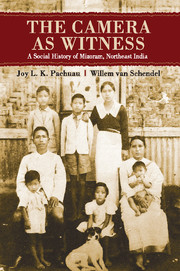Book contents
- Frontmatter
- Contents
- List of Figures
- List of Maps
- Acknowledgements
- I Becoming Mizo
- II Mizoram in the New India
- 11 The Long Goodbye
- 12 The Emergence of Popular Politics
- 13 Mizoram and the New Indian Order
- 14 Mizoram Comes to Delhi
- 15 The Search for Authenticity at Home
- 16 Mizo Style: Cowboys at Heart
- III Visions of Independence
- IV Mizo Modernities
- Copyrights and Sources
- Glossary
- Bibliography
- Index
14 - Mizoram Comes to Delhi
from II - Mizoram in the New India
Published online by Cambridge University Press: 05 May 2015
- Frontmatter
- Contents
- List of Figures
- List of Maps
- Acknowledgements
- I Becoming Mizo
- II Mizoram in the New India
- 11 The Long Goodbye
- 12 The Emergence of Popular Politics
- 13 Mizoram and the New Indian Order
- 14 Mizoram Comes to Delhi
- 15 The Search for Authenticity at Home
- 16 Mizo Style: Cowboys at Heart
- III Visions of Independence
- IV Mizo Modernities
- Copyrights and Sources
- Glossary
- Bibliography
- Index
Summary
Under the new Indian dispensation, the inhabitants of Mizoram legally became ‘tribals’. This curiously antiquated term was (and is) part of a policy to ‘advance’ communities considered backward. It lumps the people of Mizoram with hundreds of other communities, across the vast country, with which they have little or nothing in common except this bureaucratic designation. Within India, Mizoram is the region with the highest proportion of ‘tribals’ (or ‘scheduled tribes’): over 90 per cent, compared to a national average of 8 per cent. This makes Mizoram the ‘tribal’ state par excellence.
Mizoram is also among the most highly educated regions in India, and its inhabitants think of themselves as more modern and better connected to the wider world than many of their compatriots. In other words, to them being card-carrying ‘tribals’ has nothing to do with having ‘primitive traits, distinctive culture, geographical isolation, shyness of contact with the community at large, and backwardness’, which is how India's Ministry of Tribal Affairs defines tribes. It is an ill-fitting and external ascription that provides certain economic advantages but also comes with an unwelcome burden of prejudice, disdain and racism.
Living under a paternalistic state that classifies you in this way affects how you represent yourself to it – and how you look at yourself. State officials and the Indian public at large found it helpful if ‘tribals’ were seen to be tribal. They should perform their identity. As a result, much emphasis was put on display by means of costume and artistic presentation. This was especially evident when people from Mizoram participated in state rituals in Delhi.
Playing the tribal in Delhi
Soon after Independence, delegations from Mizoram began to be invited to attend state rituals in the capital. Here they were not expected to show up in the clothes they wore on formal occasions at home (see, for example, Figure 13.11) but in something more exotic and instantly recognizable.
- Type
- Chapter
- Information
- The Camera as WitnessA Social History of Mizoram, Northeast India, pp. 266 - 274Publisher: Cambridge University PressPrint publication year: 2015

